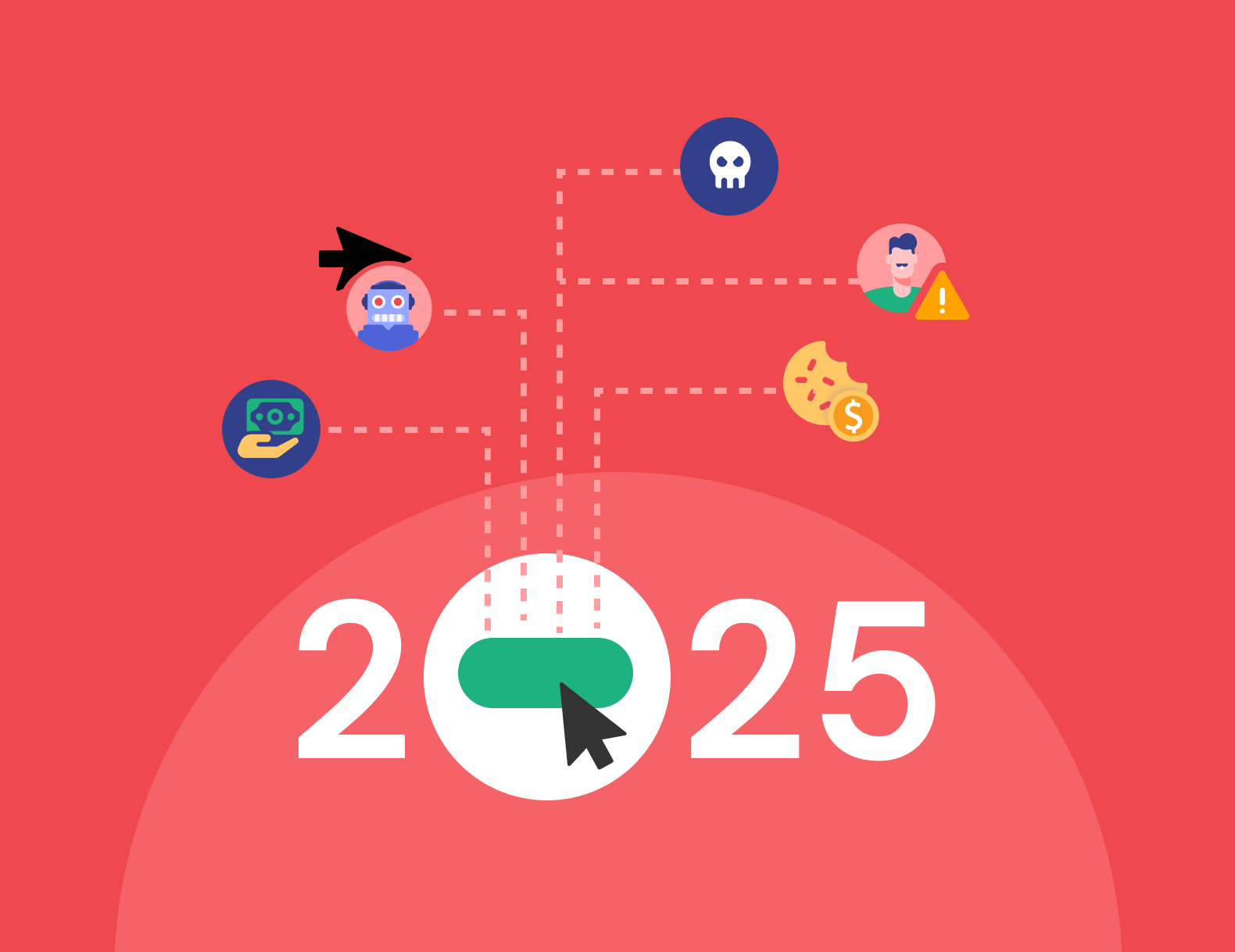The State of Affiliate Fraud 2025

Affiliate marketing remains one of the fastest-growing acquisition channels, yet 2025 made one truth unavoidable: fraud is not the exception. It is systemic, adaptive, and costly. For digital marketers, eCommerce managers, and paid media professionals, affiliate fraud is now a core performance challenge rather than a side concern.
As brands move to reclaim transparency and trust, tools like TrafficGuard’s click fraud detection software are redefining how marketers validate partner traffic and protect their spend. This blog looks at how affiliate fraud evolved in 2025, the key tactics shaping the year, and what every marketing team can learn heading into 2026.
A Year of Growth and Mounting Risks
Expansion of affiliate spend across verticals
Affiliate programmes continued to mature in 2025. From retail and travel to betting and financial services, budgets moved towards partner-driven acquisition for clear reasons: scalable reach, pay-for-performance models, and diverse ecosystems. The global affiliate marketing industry is valued at US$18.5 billion today and projected to reach US$31.7 billion by 2031, with eCommerce in North America and iGaming in Europe leading the surge.
If you are scaling affiliate campaigns, affiliate click fraud protection helps advertisers validate traffic and ensure payouts reflect genuine contribution.
Why 2025 saw rising exposure to fraud
Growth invited exploitation. As brands expanded across regions, inconsistencies in compliance and tracking created loopholes. High-commission categories such as sports betting and insurance increased the incentive for manipulation, particularly where governance and data standards lagged. Industry analyses estimate that digital ad fraud is already costing advertisers over US$100 billion annually, and affiliates are one of the channels most exposed.
Watch our 30-second explainer on how affiliate ad fraud works to see why advertisers are so vulnerable:
How does affiliate ad fraud actually work?
The evolving sophistication of fraud tactics
Fraud shifted from crude tricks to coordinated schemes. Synthetic identities and fake users blended into traffic, while postback manipulation produced “clean” attribution trails that bypassed basic checks. Without dedicated affiliate traffic verification in place, advertisers struggled to separate value from waste.
Our blog Affiliate Marketing in 2025: Growth, Risk, and the Case for Smarter Protection dives deeper into why verification is now non-negotiable.
Tactics That Defined Affiliate Fraud in 2025
Cookie stuffing, postback manipulation, and click injection at scale
Cookie stuffing resurfaced with precision. Rogue partners planted cookies to claim credit for conversions they never drove, while postback manipulation injected fake conversions into tracking systems, eroding confidence in attribution and reporting accuracy.
Fraudsters also leveraged click injection to intercept legitimate installs or conversions by inserting fake clicks just before completion, stealing credit for genuine user actions. At the same time, non-compliant media buying from banned geos and low-quality sources exposed advertisers to compliance risks while inflating top-line performance.
👉 Watch how cookie stuffing in affiliate marketing works:
Success Story:
TrafficGuard helped a global streaming brand avoid paying for more than 66,000 invalid affiliate conversions in just 12 months, saving over $1 million. These conversions we considered legitimate, but were the result of affiliate fraud tactics, such as click hijacking, low-value sign-ups, and using fraudulent accounts. With TrafficGuard enabled, the brand stopped affiliates from being rewarded for misattributed performance.
Rise of fake signups and synthetic identities
Low-cost automation and recycled data enabled mass creation of convincing fake accounts and form fills. These events passed simple checks, inflated acquisition metrics, and triggered payouts without real customer value.
Recycled users disguised as new acquisitions
Some affiliates presented existing users as new acquisitions to capture commissions on non-incremental activity. Impact.com lists “stolen or recycled leads” as a known fraud type. Without robust validation, advertisers paid again for the same users and degraded programme efficiency. Click fraud prevention software is now essential to detect these patterns in real time.
Callout Sports betting spotlight
A major sportsbook identified last-click hijacking and click flooding that redirected credit to affiliates for existing players. Commission spend grew while true first-time depositors did not.
The Cost of Fraud to Advertisers and Partners
Distorted ROI and wasted commissions
Fraud inflates top-line metrics and corrupts the signals used for optimisation. Teams over-invest in partners and placements that appear to perform, yet are driven by invalid activity.
Strained trust in affiliate partnerships
Fraud erodes the relationship between advertisers and partners. Payout thresholds, stricter terms, and claw-backs follow. With rising fraud incidents, it is imminent that advertisers enforce tighter compliance, with spillover effects on legitimate affiliates.
Why flawed attribution damaged decision-making
Attribution manipulation distorts the learning loop. Forced clicks, cookie stuffing, and injected postbacks create false trails. Bid strategies and budget allocations then optimise to the wrong signals.
For a deeper dive, see our blog: Affiliate Fraud Detection: From Rule-Based Checks to Machine Learning
Key Lessons Marketers Can Take from 2025
Fraud has become systemic, not occasional
Treat fraud as an operating condition, not an anomaly. It’s embedded in incentive structures and exploits gaps in data quality and governance. Research shows that global digital ad fraud losses are projected to reach US$172 billion by 2028, underscoring the urgency for proactive prevention.
Reactive fraud detection is no longer enough
If anomalies appear in the report, the money is already gone. Real-time click fraud prevention and traffic verification are now baseline requirements for healthy programmes. “Start with an Affiliate Traffic Quality Audit to detect invalid activity and uncover budget waste.”
Verified, transparent data emerged as a differentiator
Teams who invested in verification out-optimised peers. With transparent, fraud-free signals, they improved partner selection, tightened payouts to genuine contribution, and restored confidence in attribution.
Conclusion
2025 showed the scale of the challenge
Affiliate fraud is embedded, resilient, and evolving. Treating it as a minor hygiene task is no longer viable.
But also highlighted smarter protection pathways
Advertisers that implemented proactive click fraud prevention and rigorous validation protected budgets and improved decision quality. Cleaner data produced better optimisation and better partner outcomes.
Setting the stage for what is next in 2026
The leaders will pair programme growth with real-time verification. Verify traffic, detect fake engagements, and ensure every commission reflects genuine value. That is how affiliate channels scale with confidence.
FAQs & Key Takeaways
1. What are the types of affiliate fraud?
Affiliate fraud takes many forms. The most common types include cookie stuffing, brand bidding, affiliate click fraud, postback manipulation, and fake traffic generation. Fraudsters may also use tactics such as click injection, non-compliant media buying, and synthetic identities to trigger false commissions. Each of these fraudulent activities drains ad budgets, skews performance data, and undermines the integrity of affiliate marketing programmes.
2. How to detect affiliate fraud?
Affiliate fraud detection requires advanced, real-time monitoring. Tools like TrafficGuard’s Affiliate Protection use machine learning to track, identify, and block suspicious activity across clicks, conversions, and postbacks. Marketers can detect anomalies such as spikes in traffic, irregular conversion patterns, or repeated clicks from the same devices, which are all early signs of affiliate fraud. Continuous tracking and real-time verification are essential for maintaining clean data and accurate reporting.
3. What is the impact of affiliate fraud?
The impact of affiliate fraud is both financial and operational. Global digital ad fraud losses are projected to reach US $172 billion by 2028, with affiliate marketing representing one of the most exposed channels. Fraud drains advertising budgets, inflates acquisition costs, and produces misleading data that damages decision-making. Beyond the financial losses, it weakens trust between advertisers and partners, making sustainable growth more difficult.
4. Is affiliate marketing still profitable?
Yes, affiliate marketing remains highly profitable when managed transparently. Global affiliate marketing spend is projected to exceed US $37 billion in 2025 and continue rising through 2026. Advertisers earn an estimated US $12 to $15 for every dollar spent, according to industry reports. With robust fraud prevention and clear performance data, affiliate marketing programmes continue to deliver significant, measurable revenue growth.
5. What are the statistics for affiliate marketing in 2025 and 2026?
The affiliate marketing industry is projected to grow from US $37.3 billion in 2025 to US $42.6 billion in 2026, reflecting strong global adoption and performance-driven investment. In the U.S. alone, spend is expected to reach US $12.4 billion by 2026. These findings show consistent year-on-year growth, supported by expanding verticals such as eCommerce, iGaming, and financial services.
6. How to prevent affiliate fraud?
Preventing affiliate fraud requires a proactive approach built on real-time monitoring, traffic verification, and clear compliance guidelines. Affiliate click fraud protection tools automatically detect and block invalid activity, ensuring that commissions are only paid for genuine conversions. Advertisers should also audit partners regularly, monitor referral sources, and set strict rules around geolocation, traffic type, and creative use.
7. What are the main threats in affiliate marketing?
The affiliate threat landscape continues to evolve, with growing risks from click injection, malicious traffic, cookie stuffing, and synthetic identities. Fraudsters are using increasingly sophisticated methods to disguise invalid activity and exploit attribution models. To mitigate these threats, marketers need continuous fraud detection, transparent reporting, and a dedicated protection platform like TrafficGuard that identifies and blocks suspicious behaviour before it drains spend.
Low-cost automation and recycled data enabled mass creation of convincing fake accounts and form fills. These events passed simple checks, inflated acquisition metrics, and triggered payouts without real customer value.
Recycled users disguised as new acquisitions
Some affiliates presented existing users as new acquisitions to capture commissions on non-incremental activity. Impact.com lists “stolen or recycled leads” as a known fraud type. Without robust validation, advertisers paid again for the same users and degraded programme efficiency. Click fraud prevention software is now essential to detect these patterns in real time.
Callout Sports betting spotlight
A major sportsbook identified last-click hijacking and click flooding that redirected credit to affiliates for existing players. Commission spend grew while true first-time depositors did not.
The cost of fraud to advertisers and partners
Distorted ROI and wasted commissions
Fraud inflates top-line metrics and corrupts the signals used for optimisation. Teams over-invest in partners and placements that appear to perform, yet are driven by invalid activity.
Strained trust in affiliate partnerships
Fraud erodes the relationship between advertisers and partners. Payout thresholds, stricter terms, and claw-backs follow. With rising fraud incidents, it is imminent that advertisers enforce tighter compliance, with spillover effects on legitimate affiliates.
Why flawed attribution damaged decision-making
Attribution manipulation distorts the learning loop. Forced clicks, cookie stuffing, and injected postbacks create false trails. Bid strategies and budget allocations then optimise to the wrong signals.
For a deeper dive, see our blog: Affiliate Fraud Detection: From Rule-Based Checks to Machine Learning
Key lessons marketers can take from 2025
Fraud has become systemic, not occasional
Treat fraud as an operating condition, not an anomaly. It’s embedded in incentive structures and exploits gaps in data quality and governance. Research shows that global digital ad fraud losses are projected to reach US$172 billion by 2028, underscoring the urgency for proactive prevention.
Reactive fraud detection is no longer enough
If anomalies appear in the report, the money is already gone. Real-time click fraud prevention and traffic verification are now baseline requirements for healthy programmes. “Start with an Affiliate Traffic Quality Audit to detect invalid activity and uncover budget waste.”
Verified, transparent data emerged as a differentiator
Teams who invested in verification out-optimised peers. With transparent, fraud-free signals, they improved partner selection, tightened payouts to genuine contribution, and restored confidence in attribution.
Conclusion
2025 showed the scale of the challenge
Affiliate fraud is embedded, resilient, and evolving. Treating it as a minor hygiene task is no longer viable.
But also highlighted smarter protection pathways
Advertisers that implemented proactive click fraud prevention and rigorous validation protected budgets and improved decision quality. Cleaner data produced better optimisation and better partner outcomes.
Setting the stage for what is next in 2026
The leaders will pair programme growth with real-time verification. Verify traffic, detect fake engagements, and ensure every commission reflects genuine value. That is how affiliate channels scale with confidence.
FAQs & Key Takeaways
1. What are the types of affiliate fraud?
Affiliate fraud takes many forms. The most common types include cookie stuffing, brand bidding, affiliate click fraud, postback manipulation, and fake traffic generation. Fraudsters may also use tactics such as click injection, non-compliant media buying, and synthetic identities to trigger false commissions. Each of these fraudulent activities drains ad budgets, skews performance data, and undermines the integrity of affiliate marketing programmes.
2. How to detect affiliate fraud?
Affiliate fraud detection requires advanced, real-time monitoring. Tools like TrafficGuard’s Affiliate Protection use machine learning to track, identify, and block suspicious activity across clicks, conversions, and postbacks. Marketers can detect anomalies such as spikes in traffic, irregular conversion patterns, or repeated clicks from the same devices, which are all early signs of affiliate fraud. Continuous tracking and real-time verification are essential for maintaining clean data and accurate reporting.
3. What is the impact of affiliate fraud?
The impact of affiliate fraud is both financial and operational. Global digital ad fraud losses are projected to reach US $172 billion by 2028, with affiliate marketing representing one of the most exposed channels. Fraud drains advertising budgets, inflates acquisition costs, and produces misleading data that damages decision-making. Beyond the financial losses, it weakens trust between advertisers and partners, making sustainable growth more difficult.
4. Is affiliate marketing still profitable?
Yes, affiliate marketing remains highly profitable when managed transparently. Global affiliate marketing spend is projected to exceed US $37 billion in 2025 and continue rising through 2026. Advertisers earn an estimated US $12 to $15 for every dollar spent, according to industry reports. With robust fraud prevention and clear performance data, affiliate marketing programmes continue to deliver significant, measurable revenue growth.
5. What are the statistics for affiliate marketing in 2025 and 2026?
The affiliate marketing industry is projected to grow from US $37.3 billion in 2025 to US $42.6 billion in 2026, reflecting strong global adoption and performance-driven investment. In the U.S. alone, spend is expected to reach US $12.4 billion by 2026. These findings show consistent year-on-year growth, supported by expanding verticals such as eCommerce, iGaming, and financial services.
6. How to prevent affiliate fraud?
Preventing affiliate fraud requires a proactive approach built on real-time monitoring, traffic verification, and clear compliance guidelines. Affiliate click fraud protection tools automatically detect and block invalid activity, ensuring that commissions are only paid for genuine conversions. Advertisers should also audit partners regularly, monitor referral sources, and set strict rules around geolocation, traffic type, and creative use.
7. What are the main threats in affiliate marketing?
The affiliate threat landscape continues to evolve, with growing risks from click injection, malicious traffic, cookie stuffing, and synthetic identities. Fraudsters are using increasingly sophisticated methods to disguise invalid activity and exploit attribution models. To mitigate these threats, marketers need continuous fraud detection, transparent reporting, and a dedicated protection platform like TrafficGuard that identifies and blocks suspicious behaviour before it drains spend.
Get started - it's free
You can set up a TrafficGuard account in minutes, so we’ll be protecting your campaigns before you can say ‘sky-high ROI’.
Subscribe
Subscribe now to get all the latest news and insights on digital advertising, machine learning and ad fraud.








